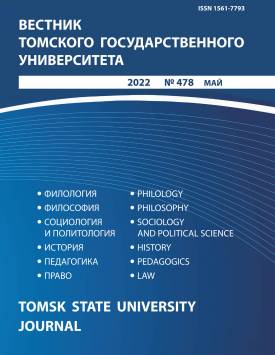Collaboration with fascists or fighting against them? Two trends in the ranks of Cossack emigrants during the Second World War
The aim of this article is to analyze the reasons for the emergence of defencism and defeatism trends in the Cossack emigration of the second half of the 1930s - mid-1940s, the forms of their manifestation, and the prospects for further research of this problem. Particular attention is paid to the heterogeneity of these trends, to the various shades in them. In the study, archival materials were examined, primarily the State Archive of the Russian Federation (funds of the former Russian Foreign Historical Archive in Prague). Published documents, memoirs, periodicals were involved. When preparing and writing the article, a number of methods of historical research were used such as problem-chronological, synchronous, comparative-historical, system-structural, anthropological. Comparing the influence of defeatism and defencism among the foreign Cossacks, one must take into account that during the years of the Civil War it was the Cossacks who were the most consistent and irreconcilable fighters against the Soviet state and the power of the communists. Therefore, it is no coincidence that the defeatists constituted the majority in the ranks of Cossack emigrants, and relatively few Cossacks openly sided with the USSR, joining the fight against the Hitler regime. Among the defeatists, supporters of the free Cossack movement (self-styledists), who directly advocated the dismemberment of Russia and the creation of a special state of Cossacks, were distinguished by special activity in the struggle against the USSR, right up to participation in hostilities on the side of Germany. It was the self-styled Cossacks, who created the Cossack National Liberation Movement in emigration, who actively campaigned for sending emigrants to the Eastern Front in the summer of 1941, and later actively collaborated with the Gestapo. Many defeatists stood for the revival of a united national Russia, mistakenly believing that the Nazis would help them in this after the overthrow of the Soviets. Most of the emigrant Cossack associations did not heed to A.I. Denikin's caveats that cooperation with Germany and participation in a foreign invasion of Russia are unacceptable for Russian emigrants. As for the defencists, the forms of their fighting against fascism and sympathy for their homeland - Russia - were different: they provided assistance to partisans and members of the Resistance movement, helped Soviet people who escaped from fascist captivity, participated in the Slovak anti-fascist uprising in 1944 (Don Cossacks), fought as part of the People's Liberation Army of Yugoslavia led by I.B. Tito. In conclusion, we note that the assessment of the goals and motives of P.N. Krasnov with the Nazis, the number of individual Cossack military formations in the Wehrmacht has not been clarified, there is no complete holistic picture of the participation of defencist Cossacks in World War II.
Keywords
Cossack emigration, Russian diaspora, patriotism, defencism, defeatism, All-Cossack association in German Empire, Cossack National Liberation Movement, Society of Cossack ZealotsAuthors
| Name | Organization | |
| Khudoborodov Alexander L. | South Ural State Humanitarian Pedagogical University | hudoborodoval@cspu.ru |
| Samokhina Anna V. | South Ural State Humanitarian Pedagogical University | samokhinaav@cspu.ru |
| Korshunova Nadezhda V. | South Ural State Humanitarian Pedagogical University | korshunovanv@cspu.ru |
References

Collaboration with fascists or fighting against them? Two trends in the ranks of Cossack emigrants during the Second World War | Vestnik Tomskogo gosudarstvennogo universiteta – Tomsk State University Journal. 2022. № 478. DOI: 10.17223/15617793/478/16
